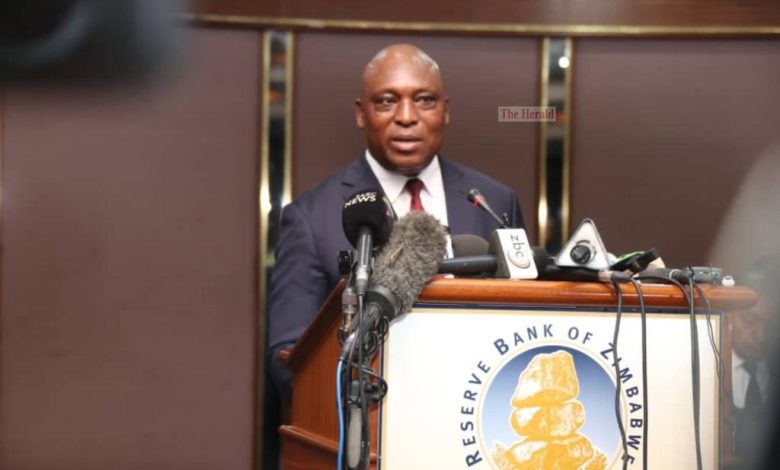Miners, Govt should find each other for sectors sustainable growth
Zimbabwe’s miners face rising costs and persistent electricity outages, high-cost structure, foreign currency shortfalls, unstable tax framework and capital shortages which will likely impact the sector’s growth prospects in 2023.
The sector considered key to the economy, has since projected a 7 percent growth, lower than 8 percent target for this year while mining costs are projected to increase by 15 percent in 2023, with energy being the main driver.
Mineral revenue is projected to increase by about 8 percent from an estimated US$6,5 billion in 2022 to around US$7 billion in 2023.
This comes against the backdrop of the Government’s ambitious plan to achieve US$12 million mining industry by 2023, which is now highly untenable also considering reduced spending by the miners in 2023.
Despite the challenges, Government through Mines and Mining Development Minister, Winston Chitando, say the target remains on track due to a number of projects some of which have been commissioned and targeting production in 2023.
The Chamber of Mines Zimbabwe, which represents the country’s major mining firms, in its state of the mining industry and prospects for 2023 report, said energy shortages have had a knock on effect on production.
“Prospects for mineral output growth for 2023 are generally lower than those recorded in 2022. Key risks to the outlook for 2023 include fragile power supply, high costs, foreign currency shortages, an unstable tax framework and capital shortages,” the report says.
Zimbabwe’s power situation is currently dire, with increased outages due to low water levels at Lake Kariba while regional power utilities which at times provide imports are having their fair share of power problems.
The country has significant reserves of platinum group metals, gold, chrome, coal, diamonds and lithium and its mining sector contributes about 11 percent of the country’s gross domestic product and over 60 percent of its export earnings.
According to the Chamber of Mines Report, most players are experiencing unscheduled power outages, with approximately 60 percent of respondents reporting power outages averaging up to six hours a day.
“Almost all respondents indicated that power outages were resulting in production stoppages and output losses. About 68 percent reported that they were losing up to 20 percent of their production potential, 40 percent indicated that they were losing between 20 percent and 30 percent, and the remaining indicated that they are losing beyond 30 percent of potential output,” Collins Chibafa, the chamber’s president said.
Most companies are using diesel-powered generators during times of power supply disruptions to sustain their operations and some are planning to invest in solar projects to supplement their power requirements.
Dallaglio Investments recently said it has not been spared by current power shortages resulting in backup power from generators which has increased cost of production.
The company, majority owned by Victoria Falls Stock Exchange (VFEX) listed Padenga Holdings, has its main assets Eureka Mine and Pickstone Peerless Mine. Other assets not in production include Giant Gold mining claims and Blue Rock claims.
Marc Nicole, the group chief executive, said the company is looking to undertake a solar project in the future as it does not have the financial muscle at the moment.
“We are also facing power outages therefore we are going to increase our back up power from generators with a long term view of setting up a 10 MW solar power plant,” he said.
According to the Chamber of Mines report, the companies are also concerned with the electricity tariff of USc12,21/ kWh which resulted in the proportion of electricity cost to total cost of production to increase by an average 42 percent.
“The average level of optimal tariff increase is approximately 4 percent, equivalent to a tariff increase to USc10.2/kWh. In the ferrochrome sector, a lower tariff of between USc6/ kWh – USc7/kWh is required for competitiveness in the export markets because of the extensive use of electricity in their smelting facilities,” reads part of the report.
According to Chibafa, the sector’s expenditure on capital projects is expected to slow down in 2023 with a minimum cumulative capital expenditure of US$1 billion expected in the year.
Of the capital projects, only 15 percent will be completed in 2023 with the rest expected to be completed after 2023.
Profitability prospects for the industry are expected to be weighed down by the anticipated high-cost structure driven by the increase in energy cost, royalty and taxes.
Most companies believe taxes and fiscal charges are expected to weigh down mining performance in 2023 and expect the tax regime to worsen citing increased royalties and other charges as well as the possibility of unresolved problematic tax issues to persist.
The royalty policy that came into effect in October 2022, compels miners to pay half of their royalties in minerals and the rest in cash.
The plan presented by Finance and Economic Development Minister, Mthuli Ncube, breaks the payment down to half in mineral form, 40 percent in local currency and 10 percent in foreign-currency cash.
Mining is capital intensive and the sector players are expecting access to foreign currency to worsen in 2023 which will result in difficulties in meeting production targets.
They foresee the mining policy and legislative environment to be challenging in 2023 characterised by recurring policy changes including increases in taxes and levies and uncertainty surrounding progress concerning amendments to the Mines and Minerals Act as key areas of concern in the legislative environment for the mining industry.
A few days ago, the Government suspended processing applications for new mining titles seeking rights to extraction of five strategic minerals citing overwhelming increase in demand for the mining claims.
The five strategic minerals are diamonds, copper, lithium, nickel and rare earth. Government believes that some miners have not been declaring the discovery of certain minerals in the ores they submitted for inspection, prejudicing the growth of the mining sector economy.
Fiscal areas of concern raised by the miners include an increase in royalties for lithium and platinum, high royalty for diamond, beneficiation taxes for PGMs and payment of taxes in foreign currency.
“Most companies highlighted that because of the hike in taxes, the net present values of most of their capital projects have become negative and the projects have become unattractive to financiers and investors. Most executives expect some of the projects to be suspended or even terminated,” said Chibafa.
He said the majority of mining companies indicated that the current 60 percent foreign currency retention is inadequate to meet their operational requirements, indicating that they were facing foreign currency shortfalls to fund their expansion projects.
“Mining executives indicated that the current retentions are under pressure from the recent 24 percent increase in electricity tariff to be paid wholly in foreign currency. The effective increase in the forex required to pay electricity bills is around 107 percent.
“The recent upward review in royalty for platinum and lithium as well as the anticipated implementation of beneficiation tax for PGMS will increase the forex required to pay the increased taxes.
“The legislation of the multi-currency system has seen most suppliers and service providers demanding payments exclusively in foreign currency. Therefore, due to the above pressures, the majority of respondents now face an effective retention level of between 35 percent and 45 percent,” said Chibafa.
The miners are also concerned over the loss of value on the surrender portion of export proceeds due to exchange rate disparities.
However, despite the challenges and concerns, the year 2022 will not go without mentioning the various mining sector projects worth billions of US dollars that were commissioned, setting the base for the industry’s growth in 2023 and beyond.
The projects have been commissioned within the platinum, gold and lithium sectors with some targeting commercial production early next year.
President Mnangagwa recently presided over the groundbreaking ceremony for a new US$130 million Sabi Star lithium mine in Buhera District, Manicaland Province.
Zimbabwe is believed to have the largest lithium reserves in Africa and the fifth-largest deposits worldwide and lithium mining in the country is on the rise with several projects in the exploration phase forecasted to start production in 2023.
Production at Sabi Star mine is anticipated to start in 2023 at a rate of 3000T/day. An exploration fund of US$20-50 Million has been set up to grow the Sabi Star resource through acquisition of additional ground and continued exploration that will expand the life of the mine.
According to Minister Chitando, Zimbabwe’s upcoming platinum projects and upgrades from existing platinum mines will position the country as a global platinum powerhouse.
According to the World Platinum Investment Council (WPIC), Zimbabwe is considered to have the world’s second-largest platinum group metals (PGM) resource, after South Africa, on the Great Dyke.
Within the platinum sector, the Karo Resources, which signed a $4,2 billion platinum deal with the Zimbabwe government in 2018 which has since commenced operations, targeting first production by July 2024 will become the fourth platinum producer in Zimbabwe while others such as Bravura Mining Consortium, Todal Mining Limited and the Great Dyke Investments (GDI) are also on target for platinum production.
Zimplats Holdings, which is presently Zimbabwe’s largest platinum producer, this year approved an overall capital investment strategy for the group with a budget of US$1,8 billion to be implemented over a 10-year period.
Economist Dr Prosper Chitambara said the country will need to continuously enhance the processing capacity for different minerals to preserve as much value within the economy.-ebusinessweekly











